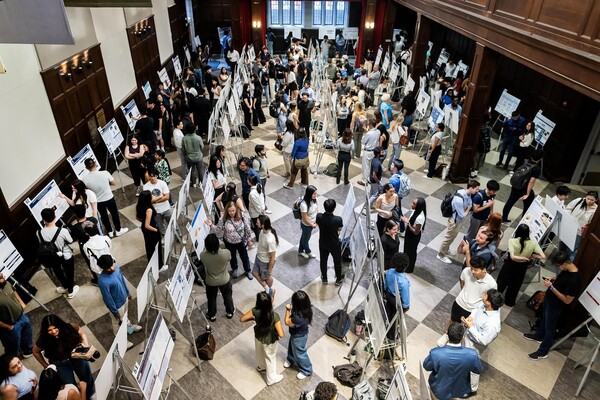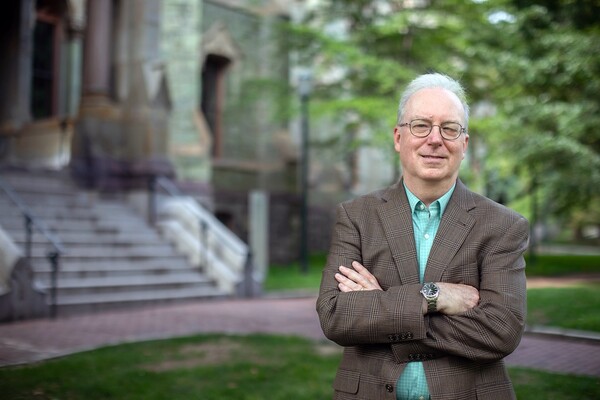
Image: Mininyx Doodle via Getty Images
Penn President Amy Gutmann joined University Trustees, the dean of the School of Arts and Sciences (SAS) and the dean of the School of Engineering and Applied Science in a ceremonial groundbreaking ceremony for the Krishna P. Singh Center for Nanotechnology on Thursday, Feb. 17.
The $80 million Center, named for Penn alumnus and Trustee Krishna Singh, will be located at the eastern edge of campus, on the 3200 block of Walnut Street, creating an eye-catching gateway into Penn from Center City Philadelphia. The state-of-the-art facility, developed jointly by SAS and Penn Engineering, manifests Penn’s commitment to interdisciplinary learning and research, and will place the University at the forefront of the emerging and vital field of nanoscience.
Penn Engineering Dean Eduardo Glandt says the Center will serve as a regional hub of multi-disciplinary fundamental and translational research, education and innovation. It will include microscopy laboratories, optics labs and 10,000 square feet of environmentally controlled clean rooms.
“This facility,” Glandt says, “will allow researchers in academia and business to venture into this transformative technology.”
“Science is, after all, done by people, and as the boundaries between scientific disciplines become increasingly blurred, this kind of collaboration is what will keep Penn at the cutting edge of research.”
The 100,000 square-foot, L-shaped Center is being designed by the New York-based firm Weiss/Manfredi. Construction will be managed by the Gilbane Building Company headquartered in Rhode Island. The structure will feature walls of glass and steel and is expected to be one of the largest nanotechnology centers in the region.
Singh, who provided a $20 million naming gift for the Center, is founder, president and chief executive officer of the energy-technology company Holtec International, based in Marlton, N.J.
“We are thrilled to be taking this important step toward providing our faculty with access to state-of-the-art resources, and even more thrilled with the opportunities that the Singh Center will create for scientists from Penn Engineering, SAS, and elsewhere to collaborate,” says Rebecca Bushnell, dean of SAS.
“Science is, after all, done by people, and as the boundaries between scientific disciplines become increasingly blurred, this kind of collaboration is what will keep Penn at the cutting edge of research.”

Image: Mininyx Doodle via Getty Images

nocred

Image: Pencho Chukov via Getty Images

Charles Kane, Christopher H. Browne Distinguished Professor of Physics at Penn’s School of Arts & Sciences.
(Image: Brooke Sietinsons)